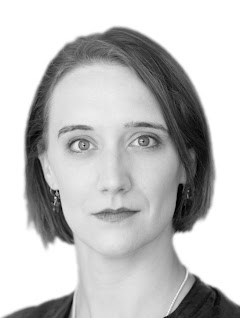Beat
A little bit of everything from portraits and food to protests and humanitarian stories.
One Shot

“I photographed Larios while he walked along his route just outside of Gilroy, Calif. To be honest it was complete luck capturing the image. I knew I wanted a photograph of him walking next to the road with a car passing behind him to give context, but I never imagined I’d luck into a bright yellow El Camino. To me the combination of the two things in the photo makes a hilarious and almost absurd image that is hard to believe happened by complete happenstance. I enjoy this image a lot because of the uniqueness of it, and the assignment, but also because it’s helpful to cover joyful/silly/fun assignments from time to time. As photojournalist we see a lot of sadness and heartache in our line of work and that weighs heavily on you. To keep yourself in balance and it helps to remember the assignments that made you laugh and brought you joy.”
Profile
My earliest memory of photography is being 10 and walking through the desert behind my grandparents’ house in Tucson, Arizona, taking pictures of cactuses and any wild animals I could find. I taught myself to shoot then with the help of my parents, and then learned from my professors at the junior college I attended at 13. I’ve been photographing in one form or another ever since.
Making photographs has always felt so natural to me. I can rarely imagine doing anything else. As a young adult, I tried quite a lot to go into other careers, biology, laboratory work, veterinary medicine, but always managed to find my way back to photography. Creating images that move people is a part of me.
My first assignment with Reuters was covering the first COVID-19 mass vaccination clinic at Levi’s Stadium in Santa Clara, northern California. It was a bit tricky to get good images because of the limited access we were given, but it taught me to think on my feet and push to make the best of every circumstance.
In 2016, I photographed a series of stories for KQED News station on homeless college students in San Francisco. I followed them through their day, from classes on campus to riding on the BART train and looking for a place to sleep at night. It was a difficult assignment but I was very appreciative of the college students for letting me shadow them. After the stories ran online, I found out from my editors that KQED had received a tremendous amount of community outreach from readers asking to start GoFundMe accounts for the students. One reader actually went as far as leasing an apartment for one of the students so she could be housed while finishing her studies. Because of the hard work the reporter and I put in creating an impactful story integrating visuals and text, a young woman is no longer homeless. It’s not often you get to see the direct impact of a story you work on, and for me, I will never forget the effect that photo assignment had.
My biggest lesson has been to be okay with taking time for myself. Burnout is a very real thing in our industry and it’s so easy to feel like you need to be jumping from one assignment to the next, always pushing for the next job. Most journalists go into the industry out of a sense of duty and passion, but those exact things can also become the reason they get exhausted and leave the job. The hardest thing for me was becoming comfortable with allowing myself to rest, even if it’s just for a weekend. But I’ve realised my strongest work comes when I’m at my best, and taking care of myself means I can do a better job of telling my subjects’ stories and doing right by them.
Make connections with other photojournalists and editors in the industry and in your area. Reach out to them and talk about what it’s really like on the ground, what they’ve experienced in the industry and how they’ve seen it change. Nearly every opportunity I’ve had as a photojournalist has come from connections I made through internships and relationships I’ve built with editors and colleagues.
There are several photographers I look up to visually, including Matt McClain, Oliver Contreras, Kent Nishimura, Noah Berger and Gabrielle Lurie, to name a few. As a photojournalist, it’s important to have your own style of work, but it’s also important to continue to study and learn from others. I am constantly in awe of the work these photographers produce and how they interact with their subjects and assignments. One of the best ways I know to keep pushing my own work is by studying the photographers I look up to and thinking how they would approach an assignment, seeing the world through their lens.
I believe photojournalism is more essential than ever. Our ability to show exactly what is happening throughout the world and in areas most people would not be able to access is essential. I also believe there needs to be more transparency with the public about what the news media are ethically allowed and not allowed to do. This will help to foster a better relationship and reduce the perception that the news media are untrustworthy. As a photojournalist, it’s critical for us to be open about how we capture images, minimise our impact on subjects when we are out in the field, and limit digital editing and post-processing.
Behind the Scenes

